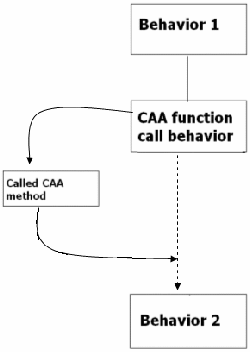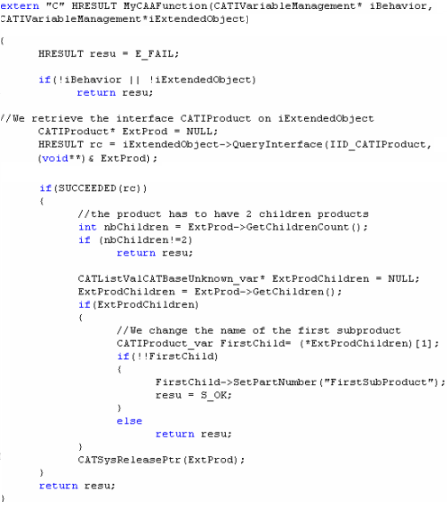System | |||||||
|
| ||||||
Describing this Operation
This operation is designed to:
Methodology
You choose the working mode (Process or
library) of the operation. In library mode, the name
of the function, which corresponds to the name of the CAA function to call, is
required. In this mode, the Process Name input is the library name. The library
name does not need the extension (like .dll under Windows OS), the operation
being OS independent, it looks automatically for the library corresponding to
the current Operating System. Arguments: The behavior itself and the extended
object.

- Inputs and outputs managed with CATIVariableManagement interface.
- Extended object managed through the same interface.
- Behavior states depend on the return code of the called function.
- Process: The operation remains the same as the V6R15 one. The only difference is that it is possible to specify in which mode the process runs.
- Library: The
function name is required and the process name requires the name of the library
to load. The operation is in
CannotOperatemode until the 2 mandatory inputs i.e. the library name and the function Name are valuated. So if the function is located in a file called MyLib.dll, the library name is MyLib. The library need not be in the runtime view at build time. Since the operation calls a library, the module containing the function has to be compiled.
Example
When working with the CAA function, make sure that this function has the following signature:
extern "C" HRESULT MyCAAFunction (CATIVariableManagement* iOperation, CATIVariableManagement*iExtendedObject) (see script below.)The inputs are those defined on the operation. As the operation is an argument of the function, the
CATIVariableManagement interface is used to retrieve
the operation inputs. Operation outputs are managed using the same interface.

Using this Operation Interface
| Name | Name attributed to the operation. |
| Comment | Comment attributed to the operation. |
Using this Operation
You want to perform advanced operations using C++.